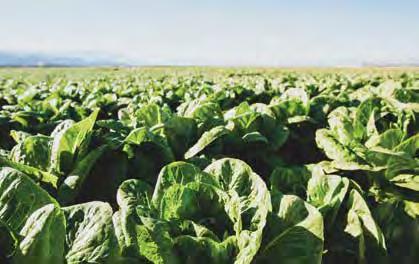
3 minute read
A biosecurity threat marches closer
A BIOSECURITY THREAT
MARCHES CLOSER
Words by Anna Rathé : Biosecurity Manager, HortNZ
Photo by Mr Noy Sopha, as part of NZAID project in Cambodia, Plant & Food Research
Situation update
In April last year I wrote an article in this magazine on an emerging biosecurity threat – the fall armyworm (Spodoptera frugiperda) which had recently made landfall in the north of Australia for the first time. Since then, fall armyworm has marched its way south through mainland Australia. After the first detection on two Torres Strait Islands in January 2020 it turned up in Queensland in February 2020, The Northern Territory and Western Australia in March 2020, New South Wales in September 2020 and there have recently been sightings in Victoria. In December 2020 there was a preliminary report of larvae from a single field in New Caledonia. Fall armyworm has proven itself a highly successful invader. It has made its way to over 60 new countries, none of which have managed to eradicate it. It is clear that this pest is moving progressively closer to New Zealand, and we need all growers to keep an eye out. If it were to arrive on our shores, early detection provides the best chance of managing the pest.
What to look out for
Eggs Dome-shaped cream-coloured eggs are laid on the underside of leaves near the base of the plant. Usually, eggs are laid in clusters of a few hundred which the adult moth covers in a layer of greyish furry scales.
Caterpillars Caterpillars go through six larval instars. As they develop the larvae grow in size, starting at around 1.5mm and reaching up to 34mm when mature. The instars change in colour from greenish, through to orange and then brown. Fall armyworm caterpillars tend to hide during the day in the whorl or leaf axils. Crop damage is most likely to be observed during the summer and early autumn months when larvae are feeding.
Adults Adult moths emerge at night and are highly mobile. The moths have a mottled grey/brown forewing, a white hindwing and a wingspan of 30–40mm.
It can be easy to confuse some life stages of fall armyworm with similar species that are already present in New Zealand, such as tropical armyworm (Spodoptera litura) or cosmopolitan armyworm (Mythimna separata). It is important that suspect insects are identified by an expert. If you think you have spotted fall armyworm, catch it, snap it and report it by calling the Ministry for Primary Industries exotic pest and disease hotline on 0800 80 99 66.
What is the risk?
Fall armyworm attacks a wide range of crops including grasses, cereals, fruits and vegetables. Maize and sweetcorn appear to be the insects’ favoured host with most reports of significant damage on these two crops. Yield losses of over 70% have been reported in cases of severe infestation. If caterpillar populations get to very high numbers they can swarm and spread in search of food. During this phase they can chew though the stem of young plants, killing them. This trait is why they are named ‘armyworms.’ Fall armyworm favours a tropical or sub-tropical climate, and is thought to be limited by arid and cold conditions. Year-round populations are only sustained in regions with a favourable climate, otherwise infestations are seasonal.
Climate modelling is an inexact science, but some climate models have indicated that parts of northern New Zealand may be suitable for establishment of fall armyworm. The climate of other regions in the north island may only allow for seasonal invasion. While current climatic conditions may limit the threat of year-round populations establishing in wider New Zealand, small increases in temperature can have dramatic consequences for pest populations like fall armyworm.
If you think you have spotted fall armyworm, catch it, snap it and report it by calling the Ministry for Primary Industries exotic pest and disease hotline on 0800 80 99 66.











